Preface
What is Coffee cherry and why would you eat it?
Coffee cherry is the fruit that protects its seeds (coffee beans) from as they are developing with it’s bitter (sweet when ripe) husk.
Studies have shown that ripe red coffee “cherries” are a powerful source of antioxidants, at roughly eight times more than blueberries per weight. These findings indicated that coffee pulp extract contains highly concentrated nutrients with antioxidant and antibacterial properties.
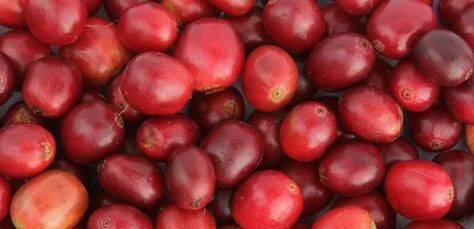
Despite all of these wonderful benefits, most of the coffee cherry in the global world goes to waste during processing. An estimated 50% of all wet coffee weight (freshly picked) is pure coffee cherry. So why not eat it instead?
Let’s take a step backwards in time… and ask when did coffee turn from a food into a drink?
How Did Coffee Turn From A Food Into A Drink?
Eating Coffee Cherry
As far as we know through history, coffee actually was first consumed as a food. Specifically the cherry part. African tribes would use the ripe cherries from wild coffee trees and mix them with animal fat to be made into round edible balls. These “coffee balls” were served at their war parties for their uplifting effects.
The animal fat combined with raw coffee’s high protein content and fiber provided the African tribes with nourishment. According to folklore, the caffeine content in the coffee balls gave the energy boost that helped warriors reach greats heights and accomplishments.
Where did coffee originate from?
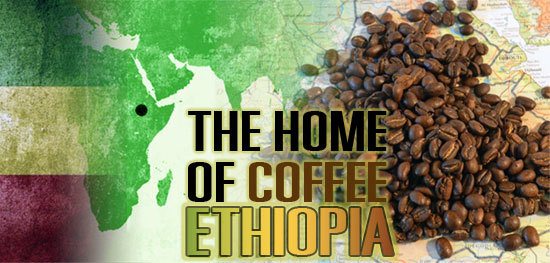
Coffee is from Africa. History tells us that the birthplace of coffee is the Kaffa Region in Ethiopia. There it’s called ‘Bunna’ in the Ethiopian language, while the use of the coffee plant is referred to as Kaffa or Coffee for the region it came from.

One interesting story about the discovery of coffee describes the tale of Kaldi, a goat-herder. Kaldi saw that his herd of goats had become hyperactive after eating the red cherries of the coffee tree. So Kaldi decided to taste the fruit himself. What he found was a delightful and energetic effect which led to Kaldi being seen dancing with his goats in joy!
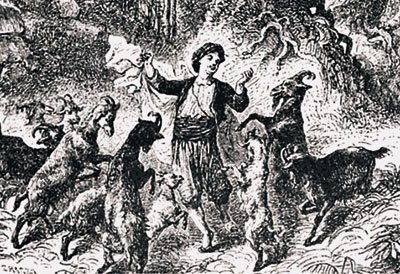
The First Coffee Drinks
Around the year 1000 AD, Ethiopians brewed together a type of wine from coffee berries, made from fermented juice of the ripe cherries mixed with cold water.
The dervish Omar, a renowned healer in the ancient city of Mocha, was cast away by his enemies to the desert. There Omar ate wild coffee cherries as food. When he boiled the cherries, the brew became so fragrant he ventured to taste it – he was amazed by the invigorating qualities of this hot brew.
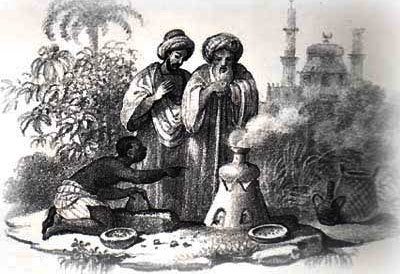
This hot coffee discovery was surrounded by awe, and thought to have magical properties. The first coffee drinkers described experiences of sensations ranging from exhilaration to religious ecstasy.
Legends about how exactly coffee could create great physical and mental feelings of well-being created a mythical status that spread throughout the Arab world. It was at first consumed only on the advice of a physician or a beloved priest. Coffee as a beverage became popular rapidly. Doctors accepted coffee as beneficial and prescribed it to their willing patients.
Brewed By Popular Demand
Dervishes provided coffee at night-long religious services in Aden, Yemen, Cairo and Mecca yemen. They passed huge jars of coffee around and chanted prayers until the new day arrived. Lawyers, artists and those who worked at night uncovered the benefits of coffee for staying awake for long hours. Soon doctors no longer had to prescribe coffee. Coffee was becoming a long lasting staple of the civilized Eastern world.
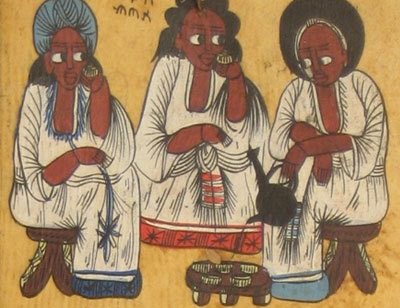
As the demand for coffee continued to grow, the Arabs developed a highly effective kind of cultivation. They started coffee plants in nurseries from seed and transferred the young plants to plantations in the foothills of nearby mountains. They irrigated the plants using a system of pebble-lined trenches that distributed water from the mountain streams throughout the young coffee tree plants. Shade poplars protected them from the sun. As popularity of coffee grew methods of preparation became more sophisticated.
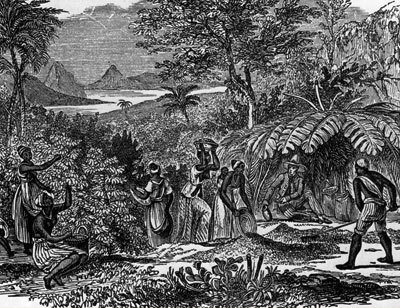
Development of Modern Coffee
People started preparing coffee as a concoction from the dried hulls of the bean. Then someone got the idea of roasting the hulls over charcoal fire. Further advances in preparation included whole beans roasted on stone trays, on metal plates then next the roasted beans were pulverized with a pestle and mortar and the powder was combined with boiling water. For over 300 years until today, this is the standard way that coffee is consumed – as ground roasted beans.

But what if this all never happened?
While drinking coffee made from roasted beans is the favorite drink of most, it’s interesting to consider what can be done with the coffee cherry.
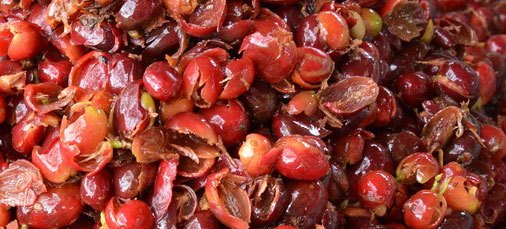
Every year an estimated 46 billion lbs of coffee cherries are discarded but by rethinking the cherry as a product this could shake up the coffee economy, which means you very well could be munching rather than sipping tomorrow’s morning joe. Who knows what food trends shall hit next. Here’s some interesting ways to consume coffee cherry to look out for:
Ways to Consume Coffee Cherry
Coffee Flour by Dan Belliveau is an company that produces finely-ground flour made from dried coffee cherries. While slightly bitter to the taste, it’s packed with nutrients, a little caffiene and can be used in portions to make delicious coffee cake and other edibles. Starbucks sells baked coffee flour muffins and brownies that you can buy at select locations.
KonaRed, a Hawaii-based company, developed a series of antioxidant-rich juices and syrups based on the ongoing health benefits of the local coffee cherry.
Cascara (from the Spanish cáscara, meaning “husk”) is a tea made from dried coffee cherries that is commonly consumed in Bolivia, where it is referred to as sultana and in Yemen where it’s called qishr. Coffee cherry tea contains about a quarter of the caffiene as coffee bean brew. This year has been popular for cascara in the United States where it is sold at many cofee shops around the country, including Starbucks.
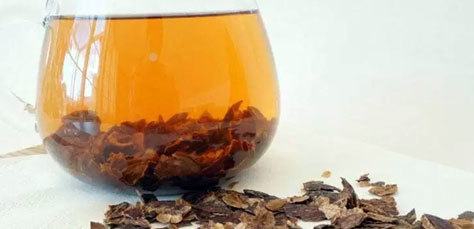
On the Island of Hawaii it’s common to see people snacking on fresh coffee cherries while they are picking coffee. It’s a sweet sugar jolt that keeps you feeling awake and energized.
Coffee cherry contains high amounts of phenolic compounds and a small amount of caffeine. It’s claimed to have immune-boosting, anti-inflammatory and anti-viral properties,
What does coffee cherry taste like?
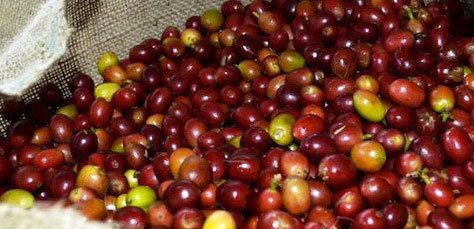
Fresh coffee cherry has an sweet flavor and slightly rough texture amazingly. When we pick coffee here in Hawaii, I just nibble on a few cherries to get the juices and spit out the fibrous husks after a bit, although you may want to eat them. When the coffee cherries are slightly fermented they are especially sweet. The flavor tones are similar to those of other fruits like raspberries, cranberries and cherries.
Perhaps someone should bring back the African “coffee balls” and start making them to sell…
Have you ever eaten coffee cherry before and did you enjoy it?